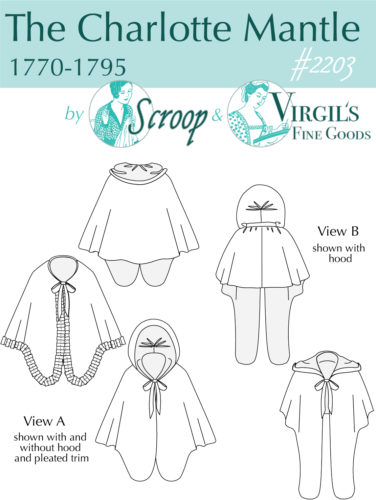Reminder: the Marie, Charlotte, and Sophia patterns, and the combined pack with all three, are on sale until Tue 13 December – don’t miss out!
Continuing on with my series of posts on the inspiration behind the Marie, Charlotte and Sophie patterns. What did we base the Charlotte Mantle on?
The Marie hugely inspired by extant mantles, but for the Charlotte we looked at another primary 18th c resource: the two mantle diagrams illustrated in Diderot’s Encyclopédie.
Diderot’s Encyclopédie, ou dictionnaire raisonné des sciences, des arts et des métiers (Encyclopedia, or a Systematic Dictionary of the Sciences, Arts, and Crafts) was a wildly ambitious general encyclopedia published between 1751 and 1772, with numerous later additions. It aimed not just to cover all the worlds knowledge, but to make it accessible to the masses.
One of the things the Encyclopédie covers is the manufacturing of garments. There are illustrations of different garment makers workshops, and diagrams of a number of types of dress, from stays to mantles.
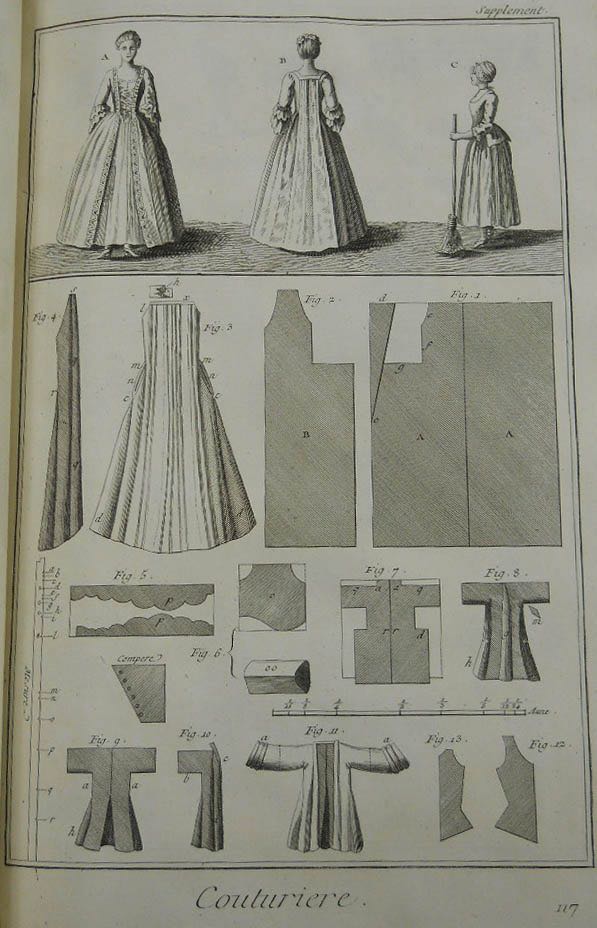
Garment diagrams in Diderot’s Encyclopédie
The Patterns:
While the Encyclopédie is slightly earlier, the mantle patterns, made up, have exactly the shape of fashionable mantles from the 1770s onwards.
One of the patterns has the wide shape with small points shown here:
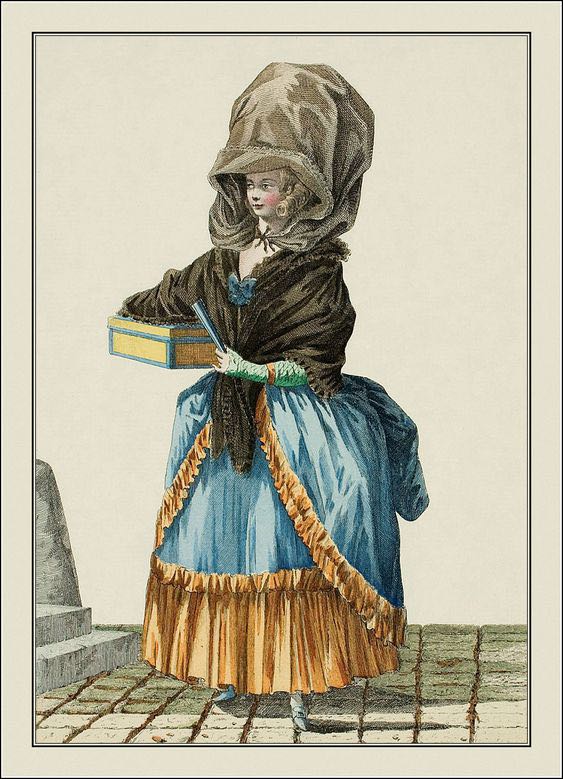
Galerie des modes et costumes français 1778
And here:
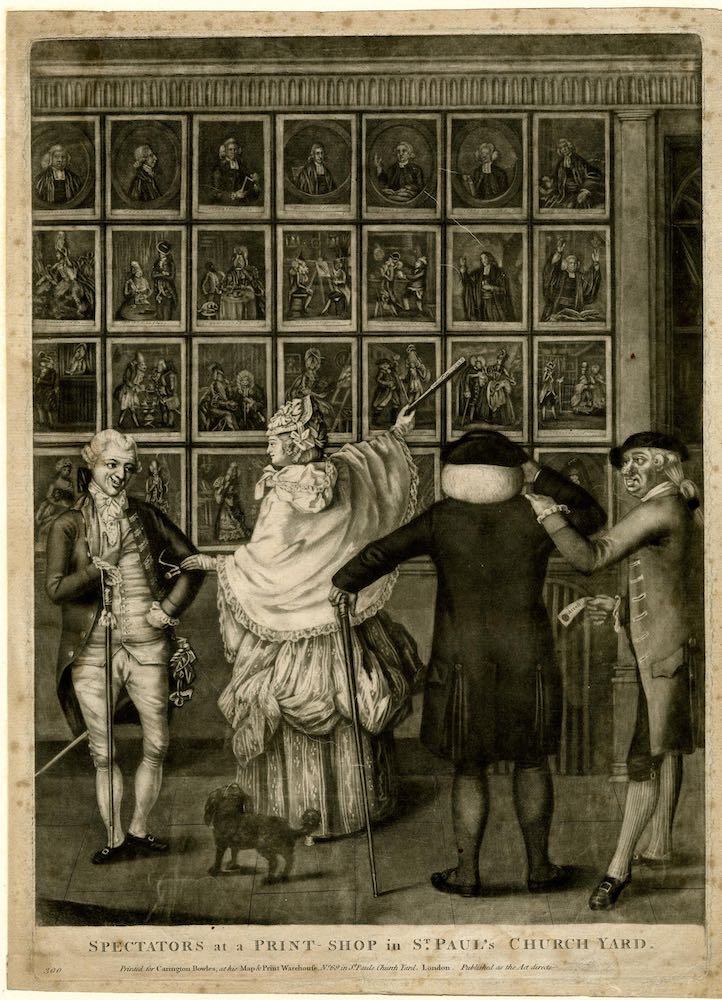
Spectators at a print shop in St Paul’s CHurch Yard © The Trustees of the British Museum
And the other the long, narrow lappets shown here:
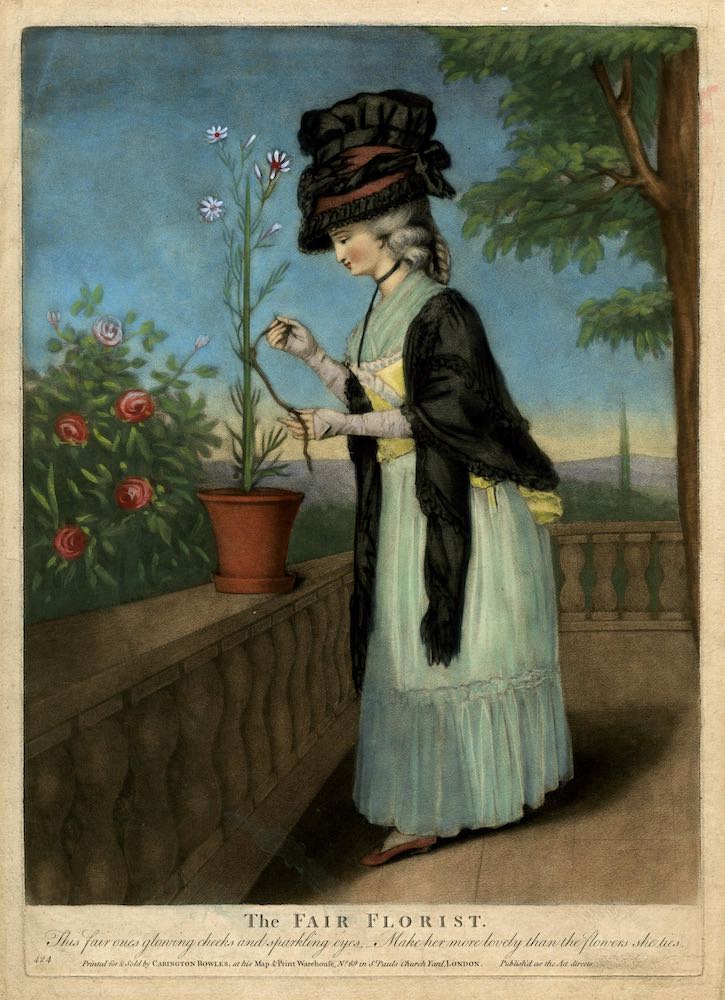
The Fair Florist, ca. 1780, British Museum, 960914001, 2010,7081.1017
And here:
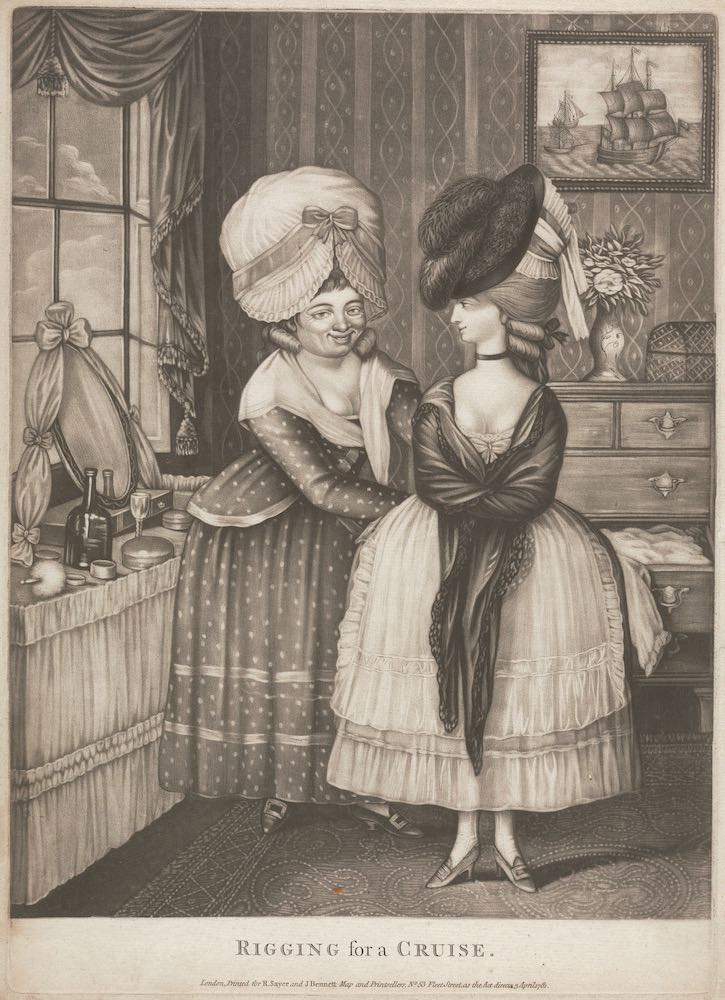
Unknown artist, eighteenth century, Rigging for a Cruise, 1781, Mezzotint, Yale Center for British Art, Paul Mellon Fund, B1970.3.805.
These became the basis for View A and B of the Charlotte, respectively.
The Encyclopédie is a fantastic source for information, but its pattern diagrams are not actually patterns. They are not drawn to any scale, and were not edited or engraved by someone with garment construction knowledge.
So they are an amazing starting point, but we still had to do extensive checking of the pattern against extant garments and visual sources to create a pattern that fits correctly on a human, and really looks like a period garment.
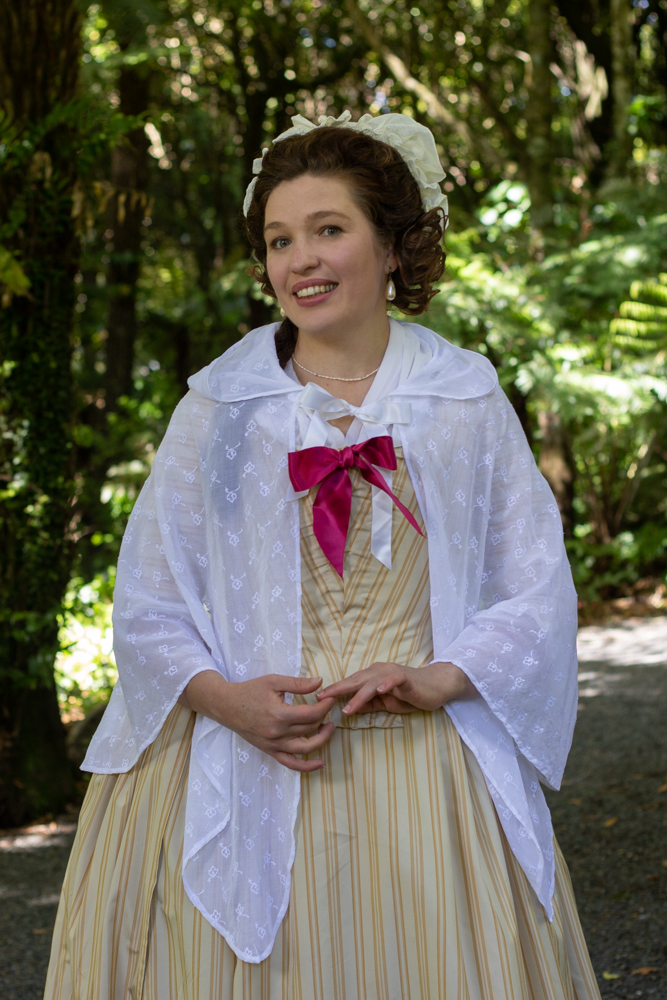
The Construction:
We also had to figure out all the construction, and decide what techniques to include in the pattern.
The Marie Mantle is unlined, because our primary inspiration pieces were unlined (and because by the time we’d included instructions for unlined silk, wool, and lace mantles, all of which take different techniques, we were up to 26 pages!).
The Charlotte Mantle pattern includes both instructions for unlined mantles, so you can make sheer wraps like this gauzy white number:

Magasin Des Modes Nouvelles Francaise et Anglaises, September 1786
And for lined mantles, like this charming pink and black number:
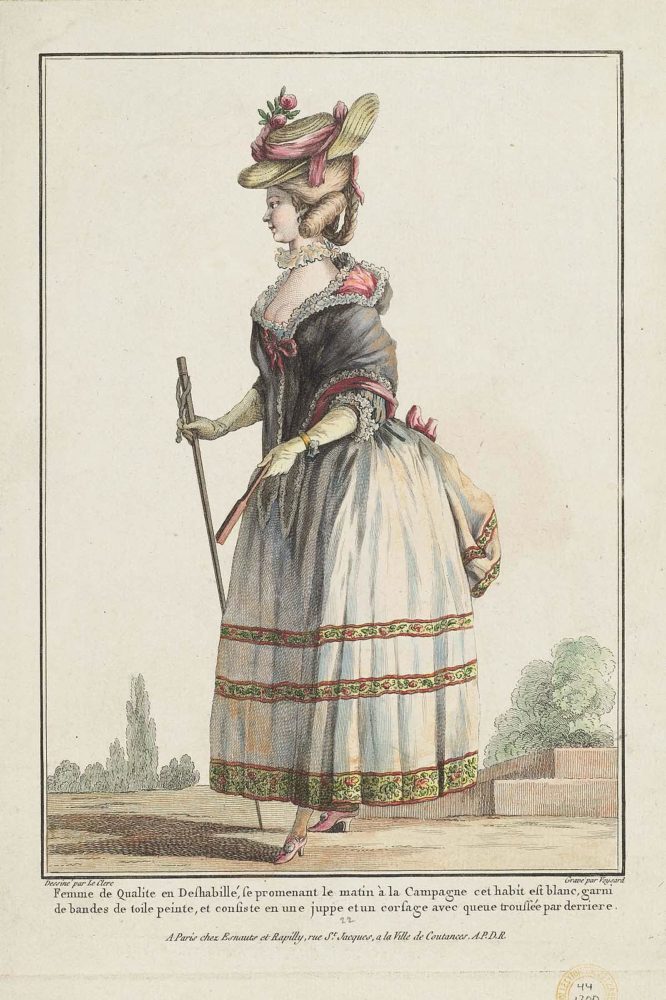
Gallerie des Modes et Costumes Français. 7e. Pierre-Thomas LeClerc, Engraver Etienne Claude Voysard, Publisher Esnauts et Rapilly, 1778
And this subtle version with white hood:
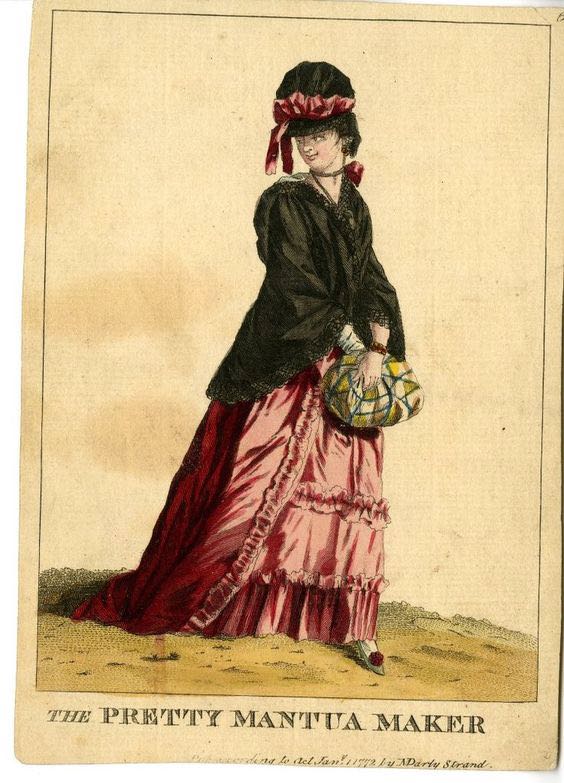
The Pretty Mantua Maker, 1770s
The lining techniques given in the Charlotte are specifically designed so that if you have both the Marie and Charlotte, you can line the Marie using the instructions given in the Charlotte.

Carrington Bowles, A Bagnigge Wells Scene, or, No Resisting Temptation, 1776 hand-colored mezzotint British Museum
The Trim:
For Charlotte’s trim we took inspiration from the narrower trim with centred application shown on 1780s mantles:
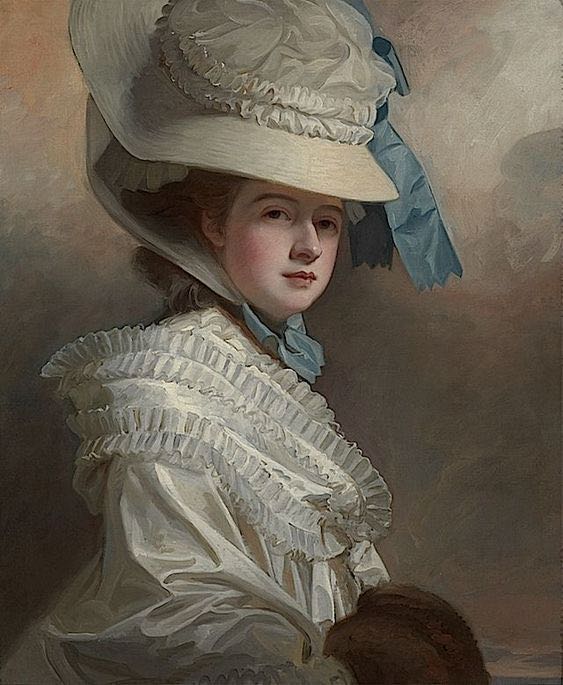
Portrait of Lady Edward Bentinck, George Romney 1782
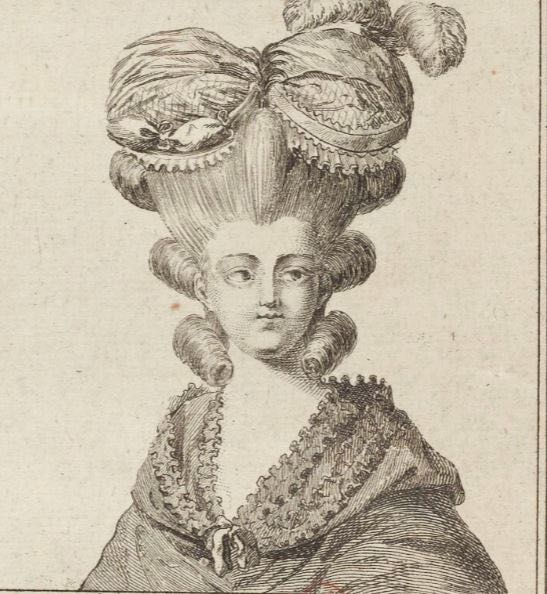
Galerie des Modes et costumes francaise, ca. 1785
The 1780s fashion for trims is quite different to the wider, looser ruffles and rococo swirls of the earlier mantles that inspired the Marie.
Based on this, we settled in a narrow box pleat based primarily on the Galerie des Modes plate above.

It’s a specifically 1780s touch that perfectly captures the aesthetic of that decade.
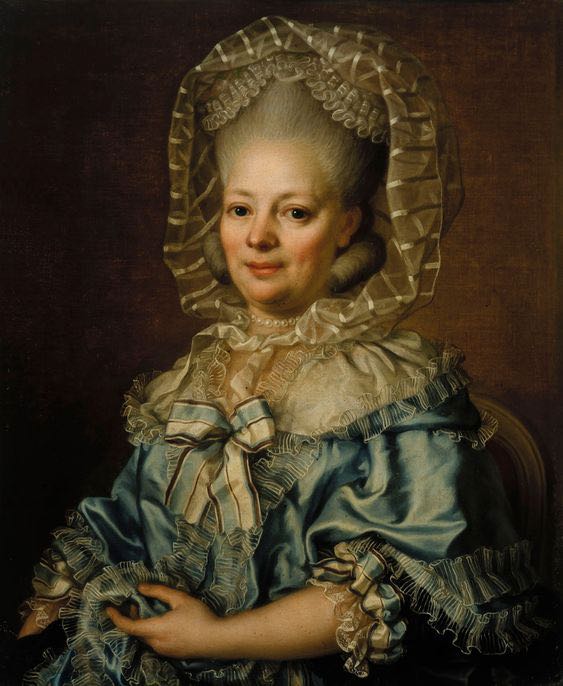
Catharina Charlotta l’Estrade by Ulrica Fredrica Pasch, 1780, (Sinebrychoffin taidemuseo – Helsinki, Finland
But, of course, you can also mix and match the Marie and Charlotte trims to give either mantle pattern a different look!
The Hood:
Finally we gave the Charlotte’s hood a point of difference to the Marie’s (other than its increased size), with a fan-pleated gather, instead of a star gather.
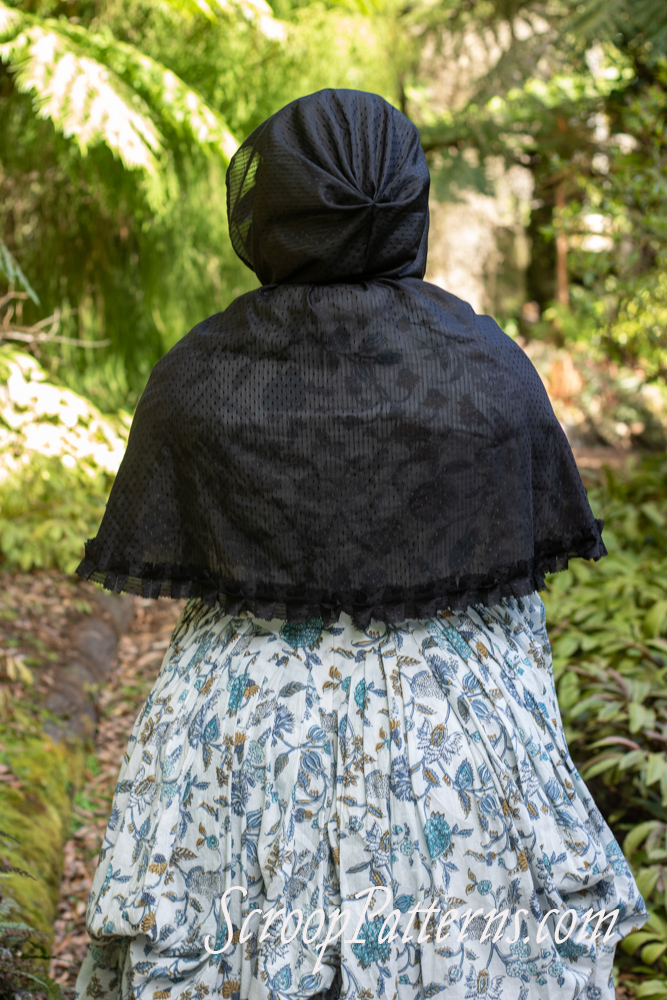

Cape, silk, ca 1800, Dudmaston Shropshire, National Trust 814621
If you have both the Marie and Charlotte patterns it’s very easy to swap the hood pleating between patterns so you can choose the technique that you prefer, either for aesthetics, or because it suits your fabric.
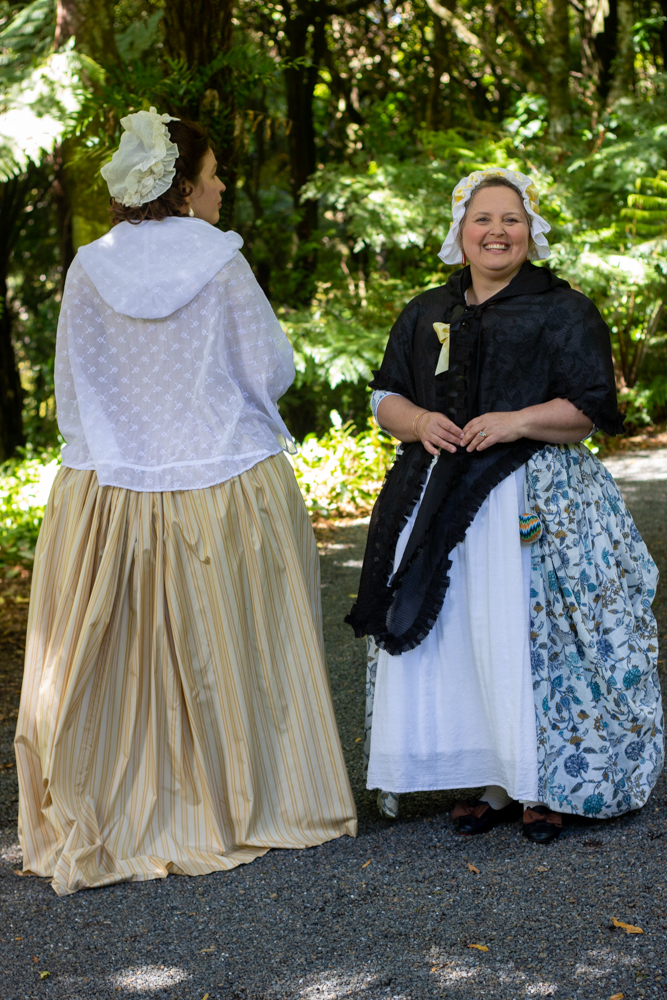
More on the Mantles:
More inspiration:
I have an entire pinterest board of inspiration for the mantle patterns, sorted into sections for Marie, Charlotte and Sophia, with an extra section just for lace mantles.
Keep in mind that some of the images are not extremely clear, and may actually depict fichu or cloaks. They are on the board for fabric, colour, or lace type inspiration. Be sure to do your own research if you need to be extremely historically accurate.
Further reading:
- Baumgarten, Linda & Watson, John with Florine Carr. Costume Close Up: Clothing Construction and Pattern, 1750-1790. The Colonial Williamsburg Foundation, Williamsburg, Virginia: 1999
- Bradfield, Nancy. Costume in Detail, 1730-1930. Harrap Limited, London: 1981
- Hunnisett, Jean. Period Costume for Stage & Screen. Patterns for Outer Garments, Book I: Cloaks, Capes, Stoles, and Wadded Mantles. Studio City, CA Players Press, Inc. 2000
- Waugh, Norah. The Cut of Women’s Clothes: 1600-1930. Faber & Faber Limited, London: 1968
Coming Soon: the Charlotte tester makes!


